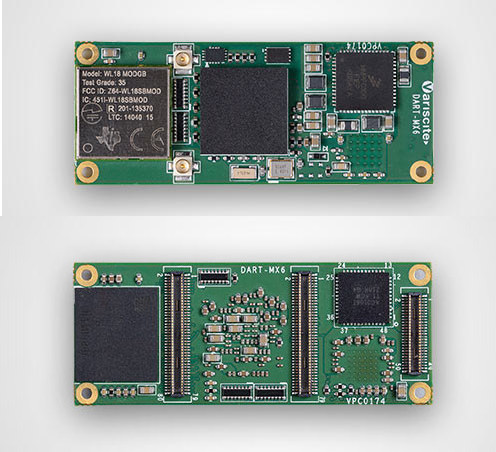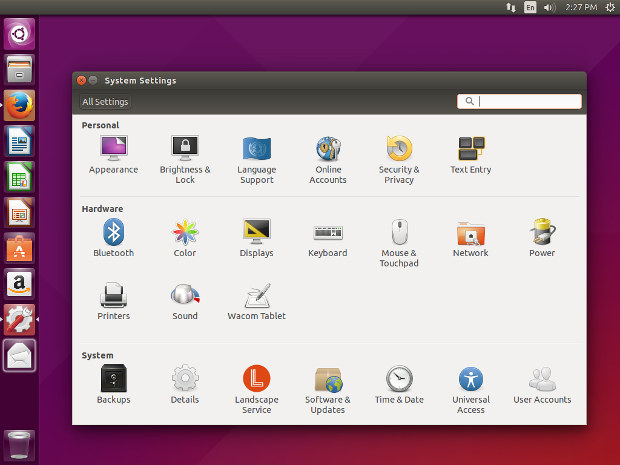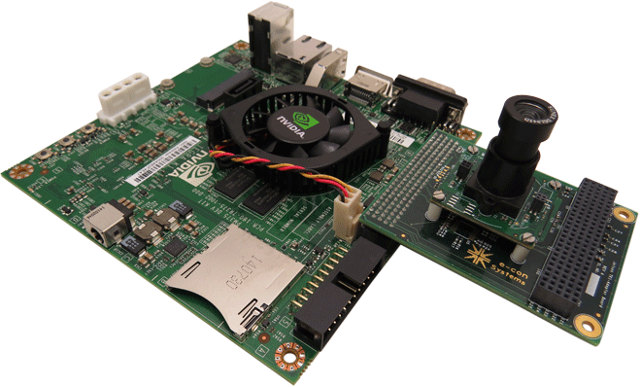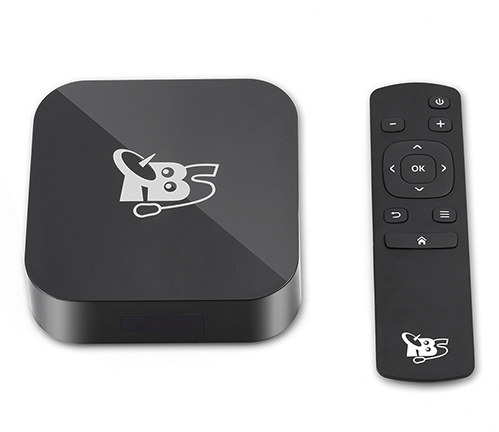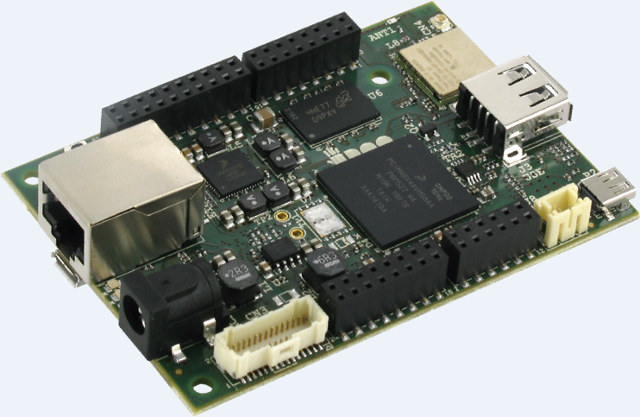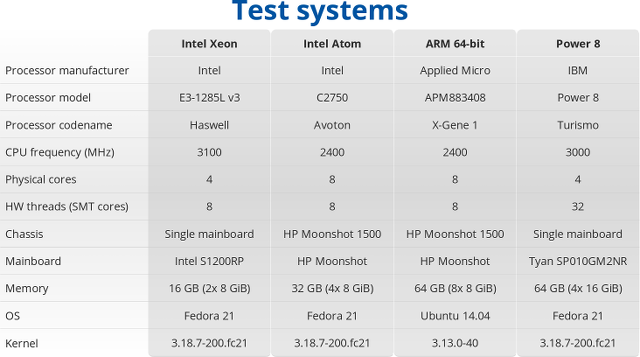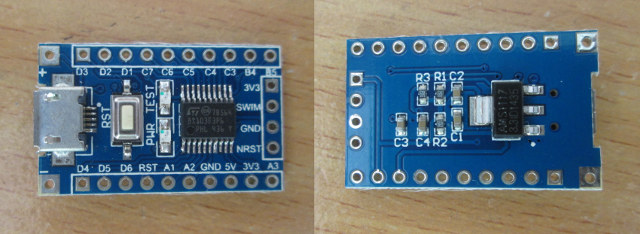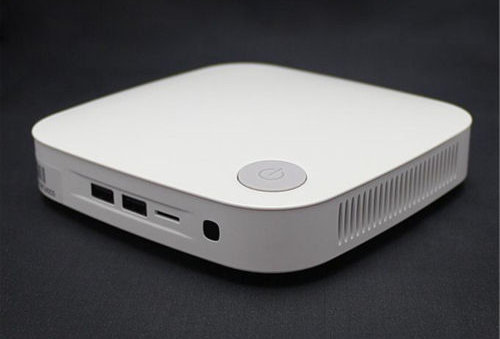Variscite has unveiled what they claim to be the world’s smallest i.MX6 SoM with DART-MX6, a 50x20mm system-on-module featuring Freescale i.MX6 dual or quad processor, up to 1GB RAM, up to 32GB eMMC flash, as well as a wireless module for Wi-Fi and Bluetooth connectivity. Other small i.MX6 modules include TechNexion PICO-iMX6, or SolidRun microSoM found in Hummingbird board, and DART-MX6 has indeed the smallest area among the three. DART-MX6 specifications: SoC- Freescale i.MX6 dual or quad core Cortex A9 processor up to 800 MHz with Vivante GC2000 3D GPU System Memory – 512 to 1024 MB LPDDR2 (PoP) Storage – 4 to 32GB eMMC flash, 4KB I2C EEPROM Connectivity – Wi-Fi 802.11 a/b/g/n + MIMO, Bluetooth 4.0 BLE (TI WL183xMOD WiLink) Audio Codec – Texas Instruments TLV320AIC3106 Interfaces and I/Os via 2x 80-pin and 1x 50-pin board to board connectors Camera Interfaces – 1x CSI, 2x CPI Display – […]
Ubuntu 15.04 Released for PCs, Servers, IoT Gateways, the Cloud, and Phones
The road to convergence is a long one, and although you still can’t really use a smartphone as both a phone and your desktop computers, Ubuntu 15.04 “Vivid Vervet” releases brings us closer to this goal, as the Linux based operating systems now supports not only the traditional PCs and servers, but also the Cloud and IoT platforms thanks to Ubuntu Snappy, and phones such as BQ Aquarius E4.5 Ubuntu Edition. Most changes for Desktop users are under the hood with Upstart replaced by systemd, the Linux kernel is now up to version 3.19, and many packages have been upgraded to a newer version. You can download i386 (32-bit x86) and amd64 (64-bit x86) desktop or server ISO images, and for the first time Ubuntu Snappy for generic amd64 platform, as well as an ARMHF image made for BeagleBone Black, which AFAIK is the very first time Ubuntu formally releases […]
e-con Systems 13MP MIPI CSI-2 Camera Designed for Nvidia Jetson TK1 Board
e-con Systems has just introduced e-CAM130_CUTK1, a 13 MP MIPI CSI-2 camera board specifically designed for Nvidia Jetson TK1 development board powered by Nvidia Tegra K1 quad core Cortex A15 processor supporting up to Ultra HD (3840×2160) resolution @ 22 fps, or 1080p @ 30+ fps with MJPEG or YUV422 output. e-CAM130_CUTK1 camera board is comprised of a camera module and an adapter board that can be directly plug into Jetson TK1 board. Camera board key features and specifications: Camera Module e-CAM130_CUMI1820_MOD with S-mount lens holder based on Aptina AR1820HS sensor. Max S/N ratio: – 36.3 dB; Dynamic Range: – 65.8 dB Interface – 4-lane MIPI CSI-2 interface Resolution / Frame rate – VGA @ 90 fps, 720p @ 60 fps, 1080p @ 30 fps, UltraHD (3840×2160) @ 22 fps, 13MP (4224×3156) @ 14 fps. Values are the same for MJPEG or YUV422. Connector – 125-pin connector for Jetson TK1 […]
TBS 2980 Matrix 2 AllWinner A80 Android TV Box Will Support USB Tuners
TBS launched their Matrix 2910 media player based on Freescale i.MX6 Quad processor in 2013, and what made the platform especially interesting was support for the company’s USB DVB tuners in their Android and Ubuntu images. The company has now unveiled its successor with TBS 2980 Matrix 2 powered by Allwinner A80 octa core processor that will also support USB DVB-T2, DVB-C & DVB-S2 tuners. TBS Matrix 2 specifications: SoC – AllWinner A80 4x Cortex 15, 4x Cortex A7 big.LITTLE processor with PowerVR GC6230 GPU System Memory – 2GB DDR3 Storage – 8GB eMMC + micro SD card slot Video Output – HDMI + AV port Audio – HDMI, AV, and optical S/PDIF Connectivity – Gigabit Ethernet, dual band Wi-Fi 802.11 a/b/g/n, Bluetooth 4.0 USB – 1x USB 3.0 port, 2x USB 2.0 host ports Misc – IR receiver, reset button Power Supply – 5V/3A Dimensions – 101 x 101 […]
UDOO Neo Combines Arduino, Raspberry Pi, Wi-Fi, Bluetooth and Sensors into a Single $49 Board (Crowdfunding)
UDOO Neo was unveiled last February as the first hobbyist board features Freecale i.MX6 Solox Cortex A9 + Cortex M4 processor. I was expecting UDOO to design support board since their earlier UDOO board combined Freescale i.MX6 processor with an Atmel MCU, and the new processor allowed for integrating the same functionality into a single chip. The board is now on Kickstarter where you can pick UDOO Neo Basic for $49 (Early bird is $35), or UDOO Neo for $59 (Early bird was $45) adding an Ethernet port, some sensors, and 1GB RAM, instead of 512 MB for the Basic version. But both versions of the board basically share the same specifications: SoC – Freescale i.MX 6SoloX ARM Cortex-A9 core @ 1GHz with 2D/3D GPU and ARM Cortex-M4 Core @ 166 MHz System Memory – 512MB (Basic) or 1GB DDR3 Storage – micro SD slot, 8-bit SDIO interface (on expansion headers) […]
HPC Performance & Power Usage Comparison – Intel Xeon E3 vs Intel Atom C2720 vs Applied Micro X-Gene 1 vs IBM Power 8
Last year, the CERN published a paper comparing Applied Micro X-Gene (64-bit ARM) vs Intel Xeon (64-bit x86) Performance and Power Usage, and they’ve now added IBM Power 8 and Intel Atom Avoton C2750 processor to the mix in a new presentation entitled “A look beyond x86: OpenPOWER & AArch64“. So four systems based on Intel Xeon E3-1285L, Intel Atom C2750, Applied Micro X-Gene 1, and IBM Power 8 were compared, all running Fedora 21, except the HP Moonshot 1500 ARM plarform running Ubuntu 14.04 and an older kernel. All four systems use gcc 4.9.2, and Racktivity intelligent PDUs were used for power measurement. I’ll just share some of their results, you can read the presentation, or go through the benchmark results to find out more. HEP-SPEC06 is a new High Energy Physics (HEP) benchmark for measuring CPU performance developed by the HEPiX Benchmarking Working Group, and here it’s not […]
How to Program STMicro STM8S $1 Board in Linux
In January, I discovered there was such thing as a one dollar development board based on STMicro STM8S103F3P6 8-bit MCU with 1KB SRAM, 8KB flash, and 640 bytes EEPROM, some GPIOs as well as I2C, UART, SPI, ADC, and PWM signals. Links to documentation and source code were provided, but development tools were only Windows based. However, one of my reader informed me SDCC (Small Devices C Compiler) supported STM8, and development in Linux should be feasible. So I decided to buy the board on eBay for $1.62, as well as an ST_link V2 programmer for STM8 / STM32 for $4.52 in order to flash the firmware. The board came pretty quickly, i.e. within 2 to 3 weeks. But due to a lost package, the programmer took nearly 3 months to reach me, as the seller had to re-send after I failed to receive it within 2 months. It comes […]
VX2 Celeron J1800 / J1900 mini PCs with 500GB Hard Drive Sell for $180 and Up (Promo)
CSQ CSW9 is an Intel Celeron J900 based mini PC with a 500GB HDD that normally sells for a little over $200 on Aliexpress once shipping is included. But today, as I found a list of Geekbuying Coupons via Google+, I noticed the device was listed on Geekbuying as VX2, and both Celeron J1800 and J1900 versions were available for respectively $179.99 and $189.99 after applying MYMVECMY coupon, which looks like a decent deals since a 500GB 2.5″ SATA drive costs about $45. Specifications listed on Geekbuying are mostly the same as for CSQ CSW9 except some difference highlighted in bold or stricken-through when removed: SoC – Intel Celeron J1800 dual core processor @ 2.41 GHz (base) / 2.58 GHz (burst), or J1900 Quad core processor @ 2.0 GHz (base) / 2.41 GHz (Burst) with Intel HD graphics (10W TDP) System Memory – 2 GB DDR3L 1066/1333 MHz Storage – […]


